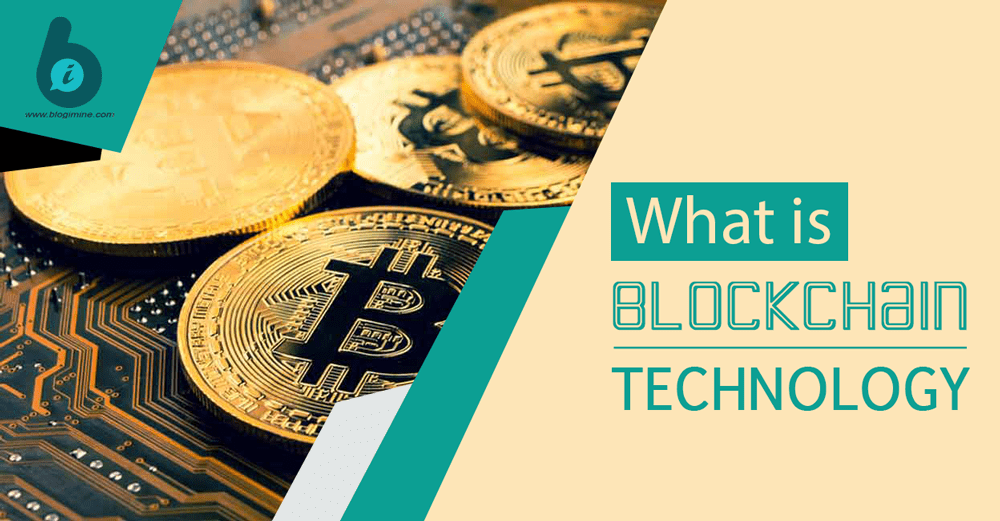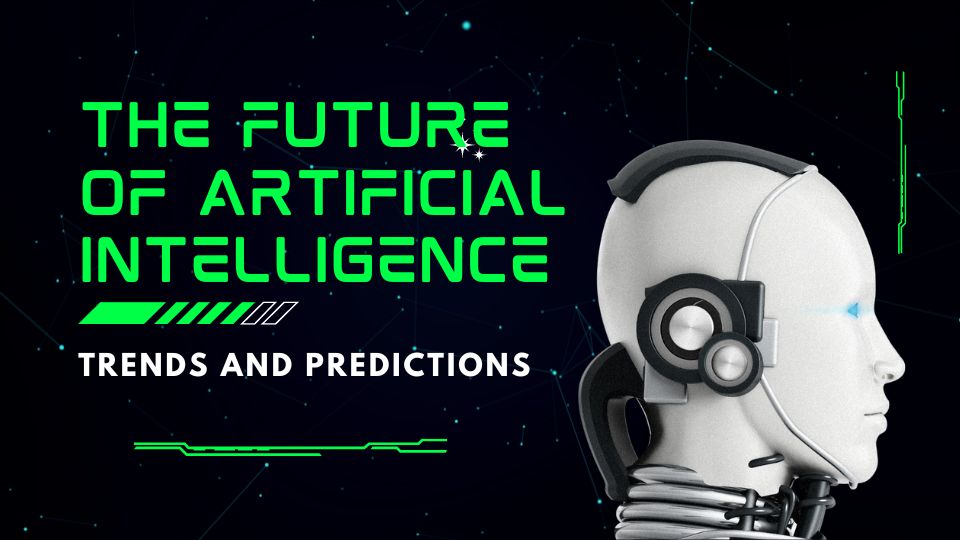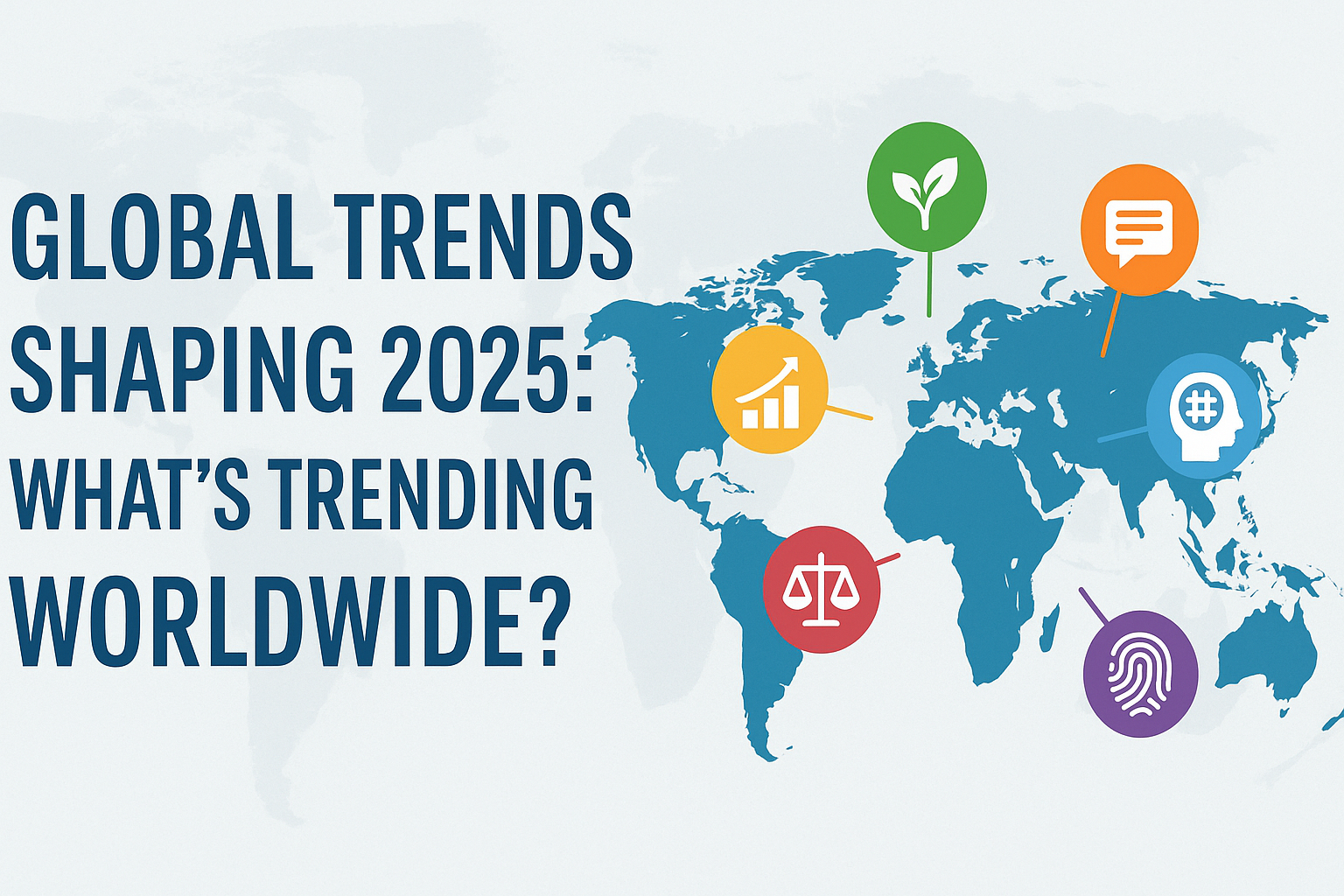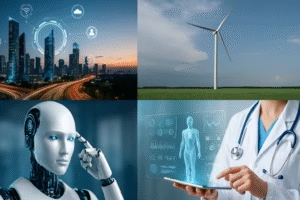
Welcome to the future, where technology is king and innovation never sleeps. As we approach 2023, it’s time to take a look at the top 10 technology trends that will shape our world in the coming years. From artificial intelligence to blockchain, these game-changing innovations are paving the way for a brighter and more connected future. So grab your devices, buckle up, and get ready for an exciting journey into the world of technology!
1. The Internet of Things
The Internet of Things (IoT) has been a buzzword for quite some time now, but it’s only getting bigger and better. Put simply, the IoT refers to the interconnectedness of everyday devices through the internet. From smart homes to wearables, this technology trend is revolutionizing how we interact with our surroundings.
One of the most significant benefits of IoT is increased efficiency in various industries. For example, factories can use sensors to monitor equipment performance and predict maintenance needs before they become critical issues. This saves both time and money while improving overall productivity.
In addition to industrial applications, IoT also offers exciting possibilities for consumers. Smart homes allow homeowners to control everything from lighting to temperature with just a few taps on their phones or voice commands via virtual assistants like Alexa or Google Home.
However, as with any emerging technology trend, there are also concerns surrounding security and privacy risks associated with IoT devices’ data collection capabilities. Despite these challenges, it’s clear that the Internet of Things will continue shaping our world in innovative ways in 2023 and beyond!
2. Artificial Intelligence
Artificial Intelligence (AI) is no longer just a buzzword, it has become an integral part of our daily lives without us even realizing it. From voice assistants like Siri and Alexa to personalized product recommendations on e-commerce sites, AI has transformed the way we interact with technology.
One of the biggest trends in AI for 2023 will be its integration into industries such as healthcare and finance. In healthcare, AI can help analyze medical records and assist doctors in making more accurate diagnoses. Similarly, in finance, AI can help detect fraud and make better investment decisions.
Another area where AI is expected to grow rapidly is natural language processing (NLP). With advancements in NLP algorithms, machines are becoming increasingly proficient at understanding human speech patterns and nuances. This opens up new opportunities for chatbots that can handle complex customer queries seamlessly.
As more businesses start leveraging the power of AI, there will also be a greater focus on ethical considerations surrounding its use. For example, how do we ensure that bias is not built into algorithms? How do we protect user data privacy while still providing customized experiences?
Artificial Intelligence is set to play a crucial role in shaping the future of technology in 2023 and beyond.
3. Big Data
Big Data is a term used to describe the large and complex data sets that businesses have access to. With the rise of digital technology, companies are collecting more data than ever before, and it’s becoming increasingly important for them to be able to make sense of it all.
One way that Big Data is being utilized is through predictive analytics. By analyzing historical data, businesses can identify patterns and trends that help them predict future outcomes. This can be incredibly valuable in industries such as finance and healthcare where accurate predictions can save lives or money.
Another use case for Big Data is in marketing. Companies are harnessing consumer data from social media platforms and other sources to personalize their marketing efforts. By understanding their customers on an individual level, they can create targeted campaigns with higher conversion rates.
Big Data is also being used in scientific research. Large-scale experiments generate vast amounts of data which must be analyzed quickly and accurately if meaningful conclusions are to be drawn. The field of bioinformatics relies heavily on Big Data processing techniques.
In conclusion (just kidding), there are countless applications for Big Data across many different industries. As technology continues to advance, we can expect even more innovative uses for this valuable resource in the years ahead!
4. Cloud Computing
Cloud computing has been on the rise for a few years now, and it shows no sign of slowing down. Essentially, cloud computing is the delivery of services like servers, storage, and databases over the Internet instead of using local hardware. This allows businesses to easily scale up or down their resources as needed.
One major benefit of cloud computing is its flexibility. With traditional on-premise solutions, scaling up requires purchasing additional hardware and software licenses which can be expensive and time-consuming. Cloud-based solutions allow businesses to quickly add resources without worrying about investing in more physical infrastructure.
Another advantage is cost savings; since you only pay for what you use with cloud services, there are no upfront costs associated with buying equipment that may sit idle during slow periods.
Cloud-based systems also offer better security measures than traditional approaches. Since data is stored remotely instead of locally at your company’s premises, any loss due to theft or natural disasters will not affect everything else on site.
Cloud computing offers great benefits when compared to legacy systems. As technology continues evolving rapidly over time – we expect to see even more growth in this arena!
5. Cybersecurity
Cybersecurity has been an important concern for individuals and businesses alike, as technology continues to advance. Hackers are becoming more sophisticated in their methods of stealing sensitive information, which can result in significant financial losses and damage to reputation. Cybersecurity involves the protection of digital information from unauthorized access or attack.
One of the biggest challenges facing cybersecurity is the human factor. Individuals often use weak passwords or fall victim to phishing scams that allow hackers to gain access to personal or business data. People need to be educated on how to protect themselves online through practices such as regularly changing passwords and avoiding suspicious emails.
Another aspect of cybersecurity is protecting against malware and viruses that can infect systems and steal valuable data. This requires implementing strong antivirus software as well as keeping software up-to-date with the latest security patches.
With increasing reliance on cloud computing services, ensuring cloud security is also crucial for businesses storing sensitive data remotely. Encryption techniques can help protect this data while it’s being transmitted across networks.
Effective cybersecurity measures involve a combination of technological solutions and user education. By staying informed about potential threats and taking proactive steps toward prevention, we can all play a role in protecting ourselves against cyber attacks.
6. Robotics
Robotics has come a long way over the years and is one of the top technology trends in 2023. With advancements in artificial intelligence, robotics is set to revolutionize various industries such as manufacturing, healthcare, and even transportation.
One of the biggest advantages of using robots in industries is their precision and accuracy when performing tasks. This not only increases productivity but also reduces errors that humans may make during manual labor.
Robots are also being designed to work alongside humans, making collaboration between man and machine a reality. This enhances efficiency while maximizing safety for workers on-site.
Moreover, with recent developments in soft robotics, robots can now mimic human movement more accurately than ever before. This opens up new possibilities for medical applications where robots can assist surgeons during complex procedures or help patients with disabilities perform daily tasks independently.
As we move further into the future, it’s exciting to think about how far robotics will advance and how it will shape our world. From autonomous cars to robotic pets – there seems to be no limit to what these machines can do!
7. Augmented and Virtual Reality
Augmented and virtual reality (AR/VR) technology has been around for a while, but it’s still on the rise. By 2023, experts predict that AR/VR will be worth more than $200 billion.
One area where AR/VR is gaining traction in e-commerce. Retailers are using these technologies to create immersive shopping experiences for customers. For example, some furniture companies offer AR apps that allow shoppers to see what a piece of furniture would look like in their home before making a purchase.
Another industry benefiting from AR/VR is healthcare. Surgeons can use virtual reality simulations to practice complex procedures before performing them on actual patients. And hospitals can use augmented reality devices to provide doctors with real-time information about patients during surgeries.
In education, teachers are incorporating virtual field trips into their lesson plans, allowing students to visit places they may not have access to otherwise. And museums are using augmented reality exhibits to bring history and art alive for visitors.
The potential uses for AR/VR technology are endless and we can expect continued growth and innovation in this field over the coming years as businesses discover new ways of utilizing its capabilities.
8. 5G
5G is the next generation of mobile networks that will revolutionize the way we communicate and use technology. This new network promises faster download and upload speeds, reduced latency, and increased connectivity. With 5G, users can expect to stream high-quality videos seamlessly without buffering or lagging.
One of the significant advantages of 5G is its ability to support massive machine-to-machine communication, which is essential for Internet of Things (IoT) devices. This feature means that more connected devices can coexist in a single area without affecting network performance.
Moreover, 5G has low latency compared to previous generations like 4G or LTE. This speed makes real-time applications such as virtual reality gaming and remote medical procedures possible.
Another advantage of this new technology is its improved security features, thanks to advanced encryption algorithms used in data transmission over the network.
Despite all these benefits, implementing widespread coverage for 5G networks remains a significant challenge due to infrastructure requirements such as base station installation and upgrading existing equipment.
As a result of these challenges, it will take some time before full-scale deployment across different countries globally happens. Nonetheless, with increasing demand for better connectivity among users coupled with technological advancements happening every day; it’s only a matter until we see universal adoption of this game-changing technology!
9. Blockchain
Blockchain is a decentralized and secure digital ledger that enables the recording, tracking, and validation of transactions through cryptographic algorithms. It has emerged as one of the most promising technology trends in recent years due to its potential to transform various industries such as finance, healthcare, supply chain management, and more.
One of the key benefits of blockchain is its ability to reduce fraud by providing transparent and immutable records that cannot be altered or deleted without consensus from all parties involved. This makes it an ideal solution for financial institutions seeking to streamline their operations while maintaining security.
Another advantage of blockchain is its cost-effectiveness. By removing intermediaries and reducing administrative costs associated with traditional payment systems, businesses can save money while still ensuring fast transaction processing times.
Moreover, blockchain technology also offers greater privacy protection than other data management solutions since users do not have to share personal information with third-party service providers. This creates new opportunities for companies interested in using customer data while adhering to privacy regulations.
Blockchain’s disruptive potential continues to attract interest from businesses across a range of sectors looking for innovative ways to optimize their processes while maintaining high standards of security and transparency.
10. 3D Printing
The technology industry is constantly evolving, and these top 10 trends are just a few examples of what we can expect in the coming years. The Internet of Things will continue to transform how we interact with devices and each other, while artificial intelligence will become even more advanced and pervasive.
Big data will remain a crucial tool for businesses looking to make better decisions, while cloud computing will enable greater flexibility and efficiency. Cybersecurity measures will become increasingly sophisticated as cyber threats continue to evolve.
Robotics technology has already revolutionized many industries but it still has vast growth potential. Augmented and Virtual Reality technologies provide endless opportunities across different sectors such as education, entertainment, healthcare, etc.
5G networks are currently being rolled out worldwide which means faster communication speeds that facilitate more efficient business practices. Blockchain technology is already transforming various industries by providing secure transactions without intermediaries.
Finally, 3D printing continues to advance rapidly creating new possibilities in manufacturing parts or products right at the point-of-use cutting down on waste material produced during traditional production methods whilst saving time too.
We should be prepared for all these changes in our working environments because they may come sooner than expected!













